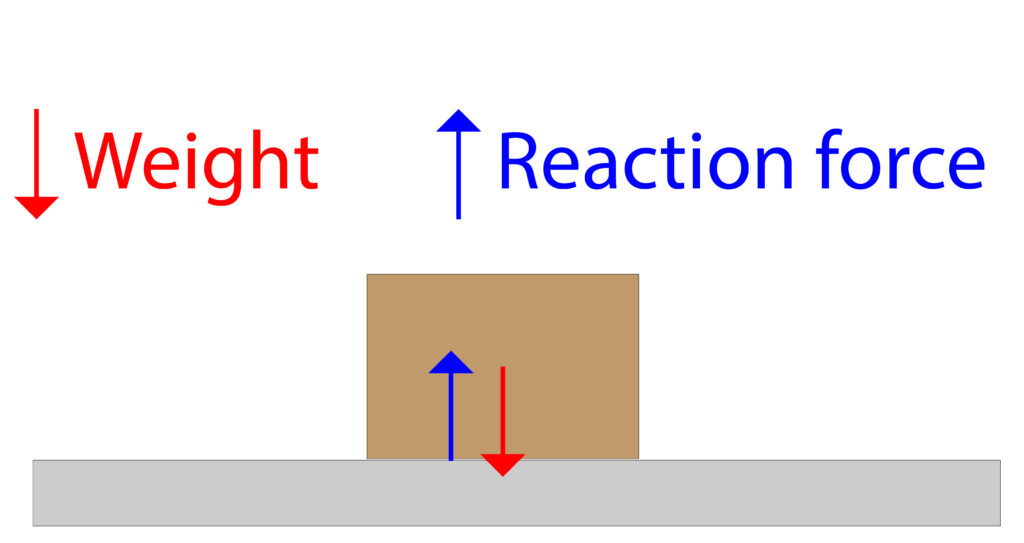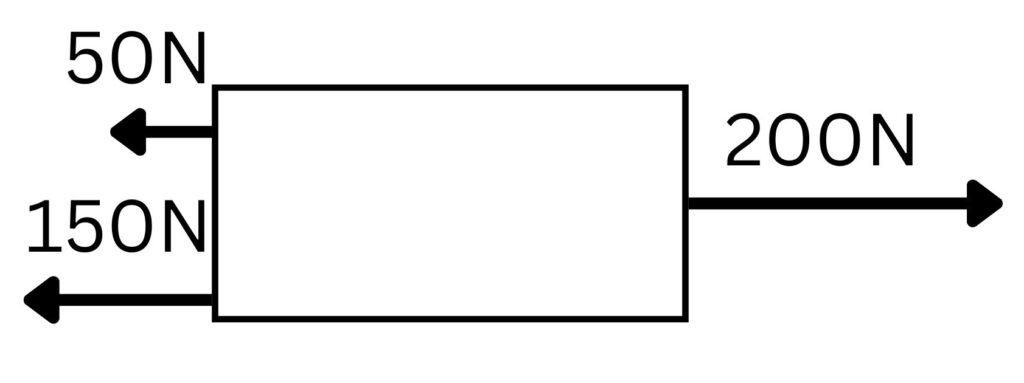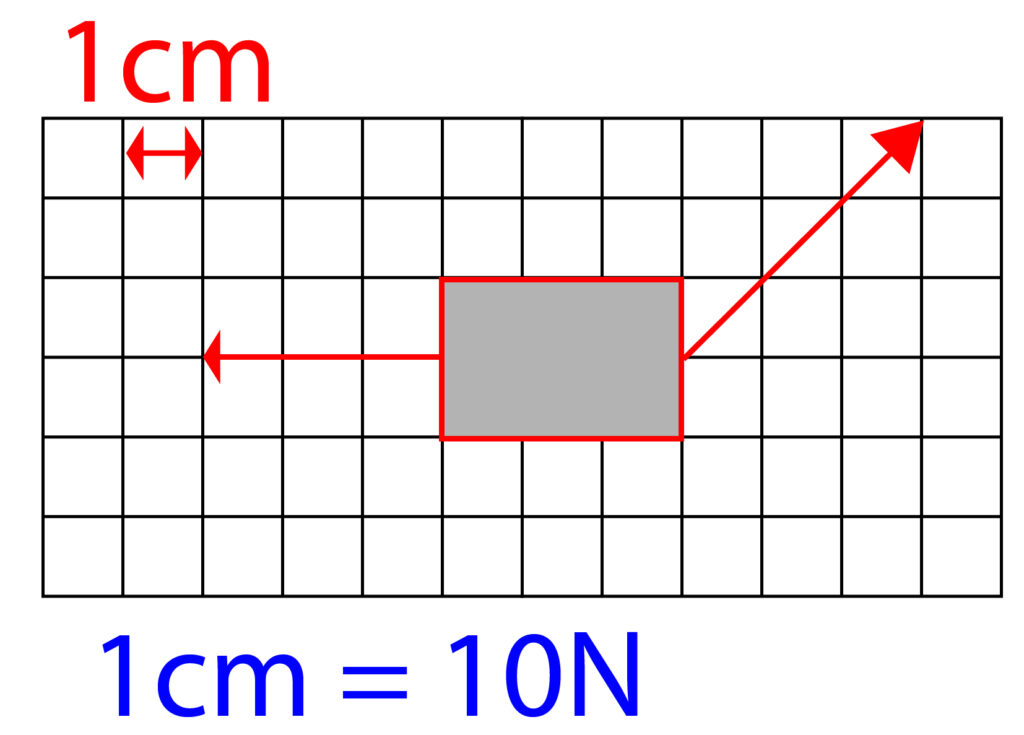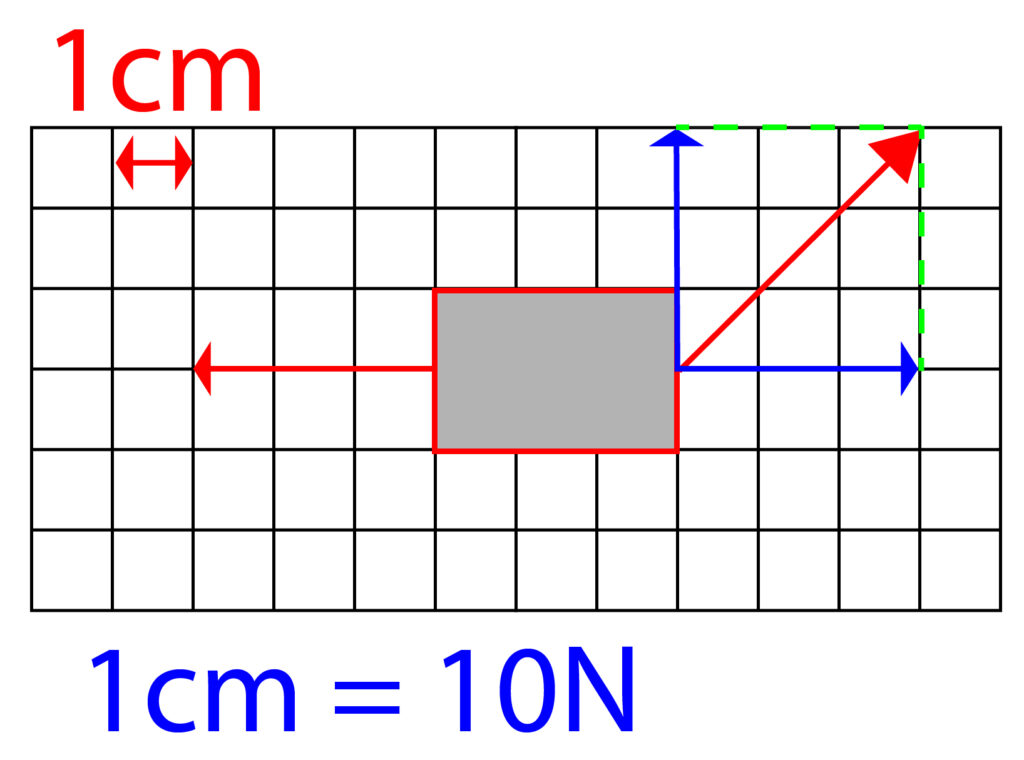AQA GCSE Forces and Equilibrium(Physics)
Forces and Equilibrium
If an object is stationary then it is in equilibrium.
For the equilibrium to occur, there are two requirements:
1.The resultant force on the object is 0N.
2.There is no overall moment (turning effects) on the object.
Lets look at an example of a box on the floor:

Gravitational force acts downwards on the box, this is called weight, shown by red arrow
The floor will exert an upwards reaction force on the box.
Both forces are equal in size, but opposite in direction. So, resultant force is 0N and the object is in equilibrium.
Lets look at an example of a see saw:

The forces acting on both sides of the see-saw are equal, so the object is in equilibrium as there is no overall turning effect.
Using force arrows to predict if an object is in equilibrium.
Lets look at an example of an object with the lines of action of the forces acting in parallel.

The sum of the forces acting to the left is 150N +50N = 200N
The sum of the forces acting to the right is 200N
As the sum of the forces to the left is equal to the sum of forces to the right, the resultant force is 0N and the object is in equilibrium.
Lets look at an example where the lines of action of force are not acting in parallel:

The lines of action for the forces are not parallel because one is horizontal and the other is at an angle.
To find out if the object is in equilibrium, we need to resolve the line for the force which is at an angle.

Each square is 1cm, which is 10N. The angled force has been resolved into both vertical and horizontal force components.
The horizontal component to right is 3 squares, which is 30N to right.
The horizontal component to the left is 3 squares, which is 30N.
As these forces are equal in size, opposite in direction, this means that horizontally, the two forces cancel.
However, the angled force also had a vertical component which was 30N. Due to the vertical component the object is not in equilibrium.
Practice Questions
1.What conditions must be met for an object to be in equilibrium?
2.How do you resolve a force into components when dealing with non-parallel forces?
3.Explain the significance of a resultant force being zero.
Absorption and Emission of EM Radiation
JJ Thomson and Plum pudding model
Ernest Rutherford and the Nuclear Model
Niels Bohr changing the Nuclear Model
Discovering the Proton and Neutron
Measuring radiation from radioactivity
Radiation types and properties
Random nature of radioactive decay
Radioactive contamination or irradiation
Hazards of contamination and irradiation
Studies on the effects of radiation on humans
Different half lives of radioactive isotopes
Nuclear Fission Chain Reaction
Writing nuclear fission equations
Drawing ray diagrams for a concave lens
Drawing Ray Diagram to produce a virtual image for a convex lens
Drawing ray diagram to produce a real image for a convex lens.
Specular and Diffuse Reflection
Seeing Coloured Objects Part 2
Viewing objects through coloured filters
Transparent, Translucent and Opaque